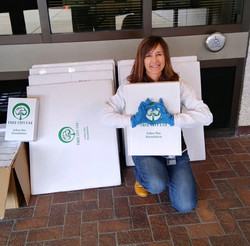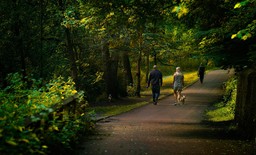|
Note: Images may appear blurry in some web browsers. We recommend opening links in Google Chrome.
Cities, villages, towns, counties, tribes and 501(c)(3) nonprofit organizations in or conducting their project in Wisconsin are encouraged to apply for a regular or startup 2021 Department of Natural Resources Urban Forestry Grant! The grants range from $1,000 to $25,000, and grant recipients must match each grant dollar for dollar. A startup grant of up to $5,000 is available for communities that want to start or restart a community forestry program. Read more...
The State & Private Forestry Landscape Scale Restoration (LSR) Competitive Grant initiative is a partnership between states and the Northeastern Area State & Private Forestry (S&PF). Its goal is to focus federal investments on issues, challenges, opportunities and landscapes of state importance that also address national and regional themes.
The LSR grant requires a one to one match, and the minimum amount of Federal funds is $25,000. Read more...
 |
|
Recognizing that trees and vegetation are among the features that make communities special places for residents and visitors, American Transmission Co. will continue funding for planting projects in communities in its service area through its Community Planting and Pollinator Habitat programs. Read more... |
 |
|
We deeply appreciate the commitment to urban forestry demonstrated by our 2019 Tree City, Tree Campus, and Tree Line USA participants. Thank you for your hard work!
2019 Tree City USA Communities – City (years): Adams (25), Albany (16), Algoma (19), Allouez (24), Altoona, City of (1), Amery (4), Amherst (23), Antigo (27), Appleton (36), Ashwaubenon (27), Read more...
|
 |
|
Thanks to the efforts of researchers over the past few decades, we have a solid understanding of the ecological benefits of urban forests, such as reduced greenhouse gases, decreased stormwater runoff, and lessening of the urban heat island effect. In contrast, knowledge of the human health benefits of urban forests is still developing. Read more... |
 |
|
2020 has been quite the year already – from extreme weather to the pandemic to civil unrest, we could all use a break from stress and anxiety. As the days are now at their longest, and lots of sun is in the forecast, it is the PERFECT time to step outside and get some much deserved fresh air and exercise. Parks are open and trees are masters at lowering your heart rate, your blood pressure and cortisol (a stress hormone) levels in your bloodstream. Read more... |
 |
|
Scientific name: Celtis occidentalis
Native to: east-central U.S. (includes Wisconsin)
Mature Height*: 30’-60’
Spread*: 30’-50’
Form: broadly and irregularly oval, approximately the vase shape of American elm
Growth Rate*: medium to fast; up to 24”-36” per year
Read more...
|
 |
|
Have you noticed any oaks looking kind of red this spring? Or maybe you’ve noticed that the leaves at the tips of the branches are looking red or maroon? Read more... |
The forest health team has produced four new factsheets since the start of 2020. These resources are designed to be informative, 2-page documents for a wide audience that includes landowners, foresters and natural resource professionals, educators, and more. The new factsheets of 2020 are linked below, and more will be announced as they are finalized: Read more...
Division of Forestry
Forest Health
|